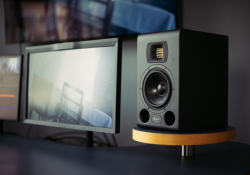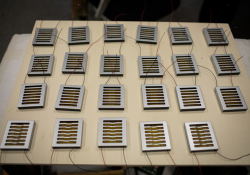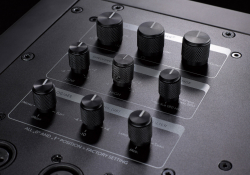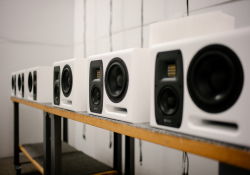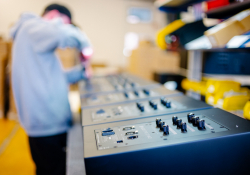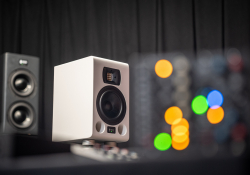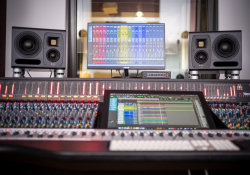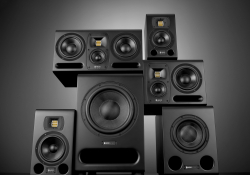
Frederik Knop (HEDD Audio): We Want to Be Innovative and Cutting Edge with Everything We Do
Since its founding in 2015, Berlin-based company HEDD Audio (Heinz ElectroDynamic Designs) has earned a solid reputation among professional sound designers as well passionate audiophiles and high-end audio enthusiasts. In developing high-end studio monitors and headphones, the entire team benefits from the knowledge of founder Klaus Heinz, who has many years of experience in the field and was at the birth of the renowned ADAM Audio brand, among others. In our interview, his son Frederik Knop, co-founder and CEO of HEDD, gave us an insight into the history of the brand and its unique technologies, and also his personal motivations, knowledge and ambitions for this visionary family business.
Let's start by discussing your personal background, because it is also an important part of the story. How did you get from musicology studies to sound engineering and sound equipment development?
It all sort of progressed in parallel. While studying musicology, focusing on mostly experimental and classical music, I produced a lot of music and took on mastering jobs on the side.
During my childhood, I had already spent a lot of time in my father's apartment discovering the piano and some other cool music hardware such as the Oberheim Expander, EMU modules and the DX7. Klaus (Klaus Heinz, ed.) is a speaker designer and a fairly good pianist as well. He has been designing loudspeakers since the mid-70s. He started his main companies ARCUS and ADAM Audio in his apartment, so the place was often filled with cabinets, electronic components, records, measuring gear, tools and all that. I spent a lot of time in this weird, chaotic environment.
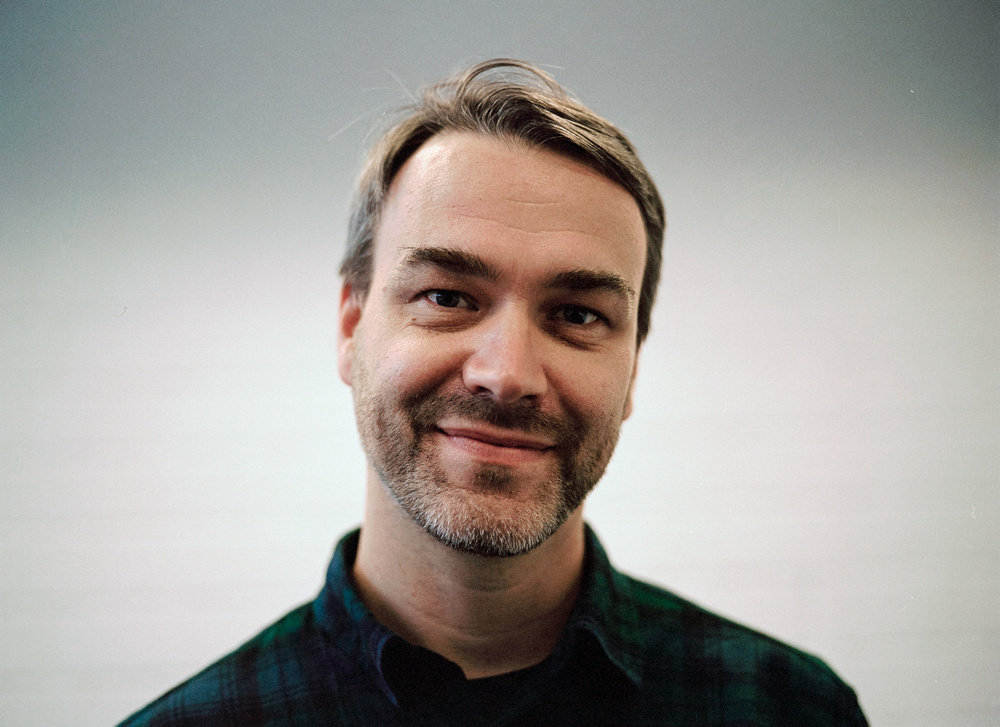
After school, I studied musicology and I went on to pursue a Music PhD at the University of Hamburg. But while I was in this PhD program, it dawned on me that the idea of becoming a full time mastering engineer was way more appealing than becoming a professor (which in Germany is almost impossible, unless you're willing to spend many years commuting and living in uncertainty). Since I already had a fully working studio space it seemed natural to give it a shot. Fortunately, I got some funding and actually picked up a lot of clients from my own musical network, which at that time was very much based in independent music.
So you already had a lot of experience and praxis thanks to your father's area of interest.
Yes, I think this is a good way of putting it. Growing up with this music and speaker maniac had a huge impact, I see it clearer now than I used to. I guess for our work at HEDD the most important thing I learned from him is the ability to listen with a very specific focus and perspective. Dynamics, frequency distribution, phase, the way specific instruments develop over time in a mix. This sort of microscopic hearing is very important, whether you design a speaker, a headphone, or work on music in post-production.
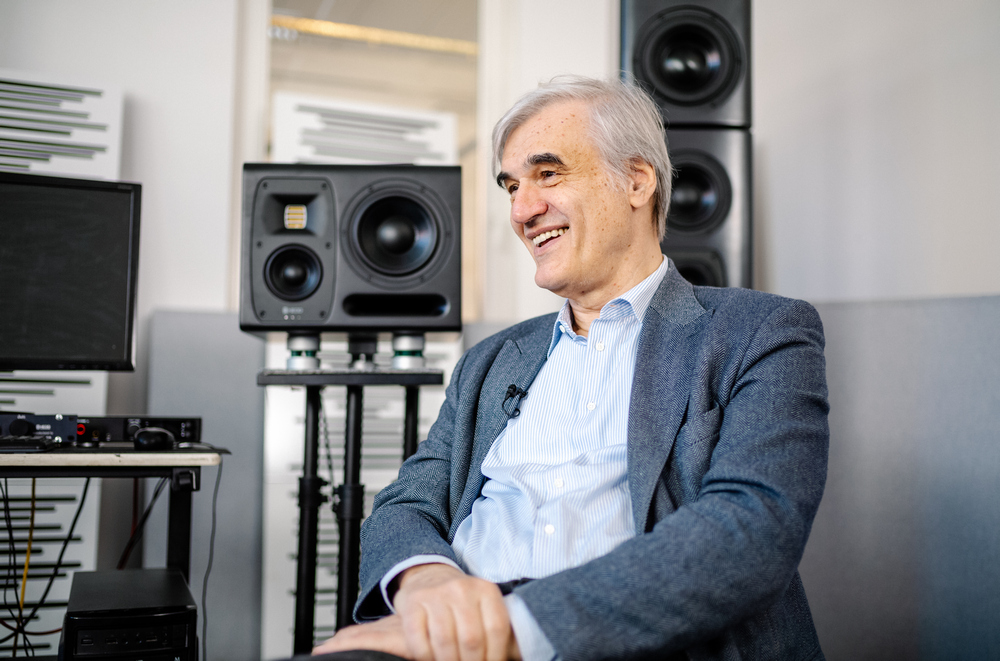
Is it also influenced by your experience as a musician and musicologist?
Certainly! Much of my time as a musicologist I spent in concerts or analysing orchestral or chamber music scores. After a while, you get a solid feeling about the natural sound of certain instruments, and this is super important when developing a loudspeaker, more important than the use of measuring gear. We often have conversations like: “Is this drum set sounding natural?”, “Does this violin sound like a real violin?”, “Does this recording have a problem, or is the speaker the problem and why?” Our individual listening experience is key to a good product.
I know every sound engineer has their own databank of their favourite reference recordings. Could you tell us some of your favourite ones?
For sure. There are a few classical music recordings like Pierre Boulez conducting Stravinsky, we have some super-critical Bach Cantata recordings in there. We often listen to D'Angelo, Kendrick Lamar, Norah Jones, Björk, Richard Devine and Squarepusher during the tuning phase of a new product. It's a pretty wide range of different musical styles.
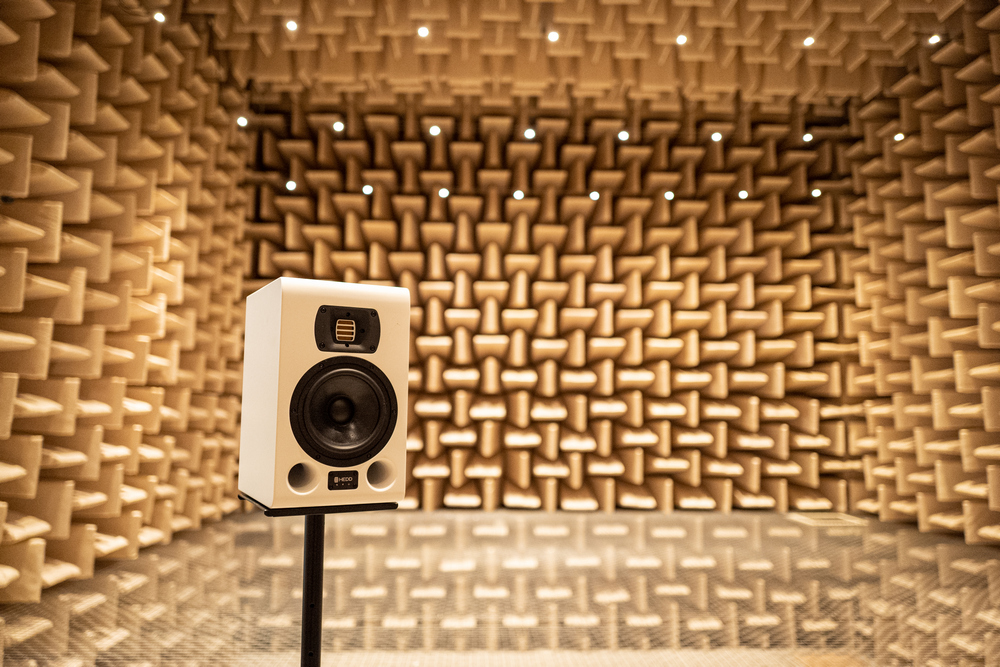
But I would say, that at the end of the day we are depending on the evaluation of naturally recorded music. That's not because we don't love electronic music. We are very close with other Berlin-based companies like Ableton, Beatport, Native Instruments and all that. But judging a speaker by having it play acoustic instruments is crucial to our approach. I mean, compared to an upright bass being played right in front of you: What is the “real” Moog or the “original” 808 sound? The truth is, we will never know, as the sound can only emanate from a reproduction device adding its own sonic signature.
Does your profession have an effect on how you listen? While you “just listen” to music, are you still focusing on certain things or looking for some particular qualities of good listening?
I can enjoy music without overanalysing it. That’s the weird thing, outside of the HEDD lab, where we dive into sound obsessively, I am actually not a super sophisticated listener. Unlike some of my colleagues, I am far from being a true audiophile. I have chosen a stressful lifestyle, I work and travel a lot, I have kids, my partner is running a bookstore and I am jumping between places all the time. So quite often I just listen with Apple Air Pods or on my iMac. My kids have a JBL Go, I don’t think this makes me a bad person. At my home desk, I have a pair of HEDD TYPE 05 MK2 monitors connected to my favourite audio interface, the Merging Anubis. Other than that, my consumption is pretty standard.
So you can turn your “sommelier ear” on and off when it's necessary. Let's focus on the story of HEDD Audio now. How did the whole idea start? I have read a brief story on your website, but maybe you could tell us some more from your perspective.
This company would obviously not exist without my father’s history as a speaker designer. He founded ADAM Audio in 1999 and was the company’s Chief Designer for fifteen years. After ADAM Audio went through difficulties in 2014 he left the business, full of ideas and eager to start something new. I was a full-time mastering engineer during that time. In a way I think us founding a company could only have worked in this very specific situation. We quickly noticed that this might be a great combination, him coming from physics and speaker design, me looking at products as a user and bringing market intelligence. And both crazy about music and musicianship.
What was the first ambition to create the new brand?
First, we sat down to discuss what Klaus would have done next in the ADAM space. We had a lot of ideas for very concrete products and improving Air Motion Transformer Technology. We felt we did not have much time to get on our feet. The first line of speakers we put out was “just” analogue, but we used much better components across the board, from self-designed Honeycomb compound woofers, to danish ICE power amps, to a better (less distorting) AMT tweeter.
All hand-built in Berlin which is the case to this day. The Lineariser® VST plugin allowed for full phase linearity in each model—our unique selling point for the first few years. From our past with ADAM, we knew many dealers, distributors and magazines, which helped. Pretty much everyone was looking forward to hearing and seeing what we would come up with now. And quite frankly, I think a lot of people were quite surprised to see my father back this fast. We have a term in German that describes him well: the Stehauf-Männchen (a person who, despite difficulties, does not get discouraged, always picks himself up again and goes for his goal, ed.)
Yeah. How has the brand grown since its beginnings in 2015? When you look back, what important innovations have happened since then?
Up until now and despite many challenges on the way, the brand is growing consistently, especially since we introduced the new DSP-based MK2 monitor series and the innovative HEDDphone®. The US, UK, Korea and Germany are our main territories so far. With the MK2 series features like CoP and the now inbuild Lineariser, I feel we have found our own way as an innovative and professional audio brand. People are really excited about the option of using the speakers open and closed. They realise they get two speakers in one, two distinct sound modes.
Yeah, that's exactly what I wanted to ask about, the Closed or Ported (CoP) technology. For me as a home listener, when is it worth having the bass reflex covered and vice versa—when is it worth having it open? Or is it more for studio engineers, while recording, listening and mastering?
When you close the ports, you get a better impulse response, a pure and clear representation of the original signal at the cost of some overall SPL. How much acoustic pressure you lose, depends on the audio and how much bass energy it contains. For some people the closed approach is the only truth—for others, it might lack a bit of fun, especially when it comes to bass feel and dynamics. (laughs) Broadcast and Mastering Engineers often prefer closed mode, a beatmaker or musician might decide differently.
Did you have to solve any technical problems while developing the CoP system?
Yeah, because we had to bring the Closed-concept into a whole range of speakers from compact 2-ways to the big "guns." We had to create an individual sound tuning for every closed mode in every model which took a lot of time. Thanks to our DSP approach the process was manageable in the end. You need to know that the original sparkle for the MK2 closed mode was actually the HEDD Tower Mains, a modular main monitoring system: incredibly powerful with a breathtaking sound due to its closed design.
So this is one of the unique parts of your products. How else would you describe how HEDD products are unique compared to others?
Next to a modern, transparent and musical sound, we want to give our customers practical features to make their life in the studio easier and ultimately more enjoyable. In the sum of things, I don’t think any other manufacturer can offer what we offer at the moment: Full phase alignment, CoP as a true innovation, desktop, shelving, and bass-extension filters to match the speakers to your room and sonic needs. When connecting an MK2 monitor with a HEDD BASS subwoofer you can even create a fully phase-linear Sub/Satellite system which really is a fascinating experience. Subs and Monitors integrate so well in this setting, traditional separation is totally gone. That’s for the speakers.
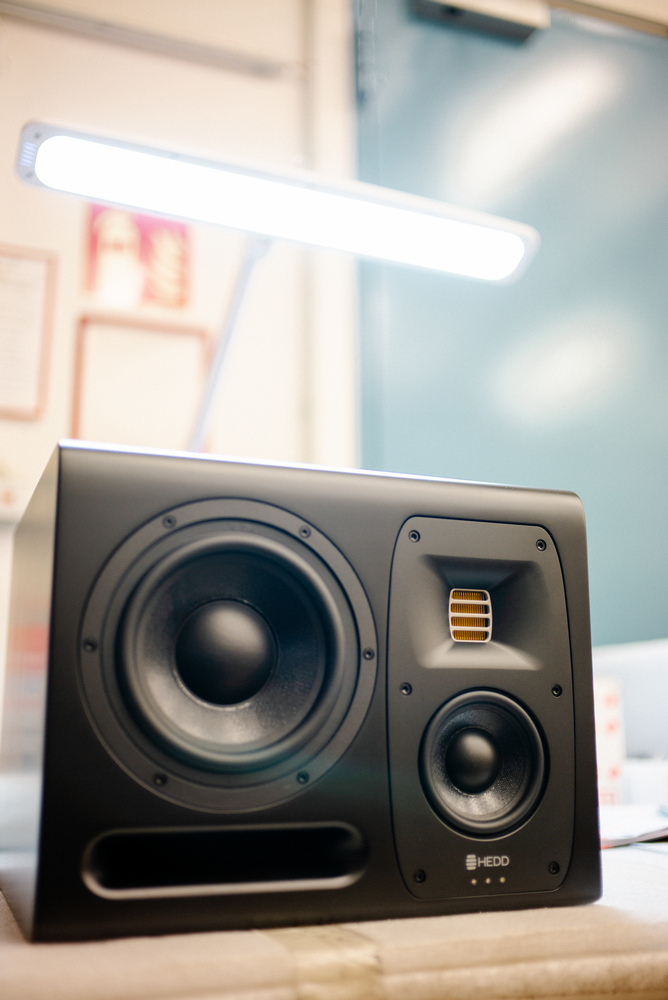
The HEDDphone® on the other hand is a totally different story. We managed to redesign our Air Motion Transformer tweeter technology to work in a full-range set of headphones, which was a huge deal for our RD team. It means that we have successfully guided AMT technology to the next evolutionary stage. We have paved the way to become an innovative headphone manufacturer.
And when I see it from my point of view as a listener, how would you describe Air Motion Transformer technology? What effect does it have for me as a listener?
The Air Motion Transformer is a device that gives you an extremely open sound that doesn't seem to have a perceivable “roof.” Frequency-wise, its limits are way beyond what anyone can hear, somewhere around 40–50kHz. It creates a sense of clarity, transparency and detail due to its principle of accelerating the air as opposed to just pushing it like in a traditional driver system. Think about a fingernail touching a guitar string, a close-mic’d voice or a live drum set that is full of fast transient, short attack material. This is where the Air Motion Transformer truly shines.
What was the most difficult part of integrating AMT technology into the headset? Does it depend on used materials or rather does the technology have to be changed?
The headphone’s materials have been there all the time, a HEDDphone® would have been possible years ago. AMTs are based on a superlight and heat-resistant Kapton diaphragm, sometimes used in aeroplanes and space crafts to protect the cabling. We used Kapton since founding ADAM in 1999. The key to the HEDDphone® was to sit down and redesign the actual geometry in which the folds are aligned on the driver. By playing around with different fold depths and widths, we enabled the driver to reach low, while creating an even and balanced frequency response. It took us almost 20 revisions on the way to the final unit.
How did the covid situation influence the whole development process?
2021 was a year of various challenges. Pretty much everything you have seen on the news regarding supply, sourcing and logistic issues played a role at HEDD. We sold our speakers in waves and had several months in which we could not supply properly. But ultimately, I think our crisis management has worked very well to a point, with the exception of one model, everything is shipping again. Our Berlin production has never been busier.
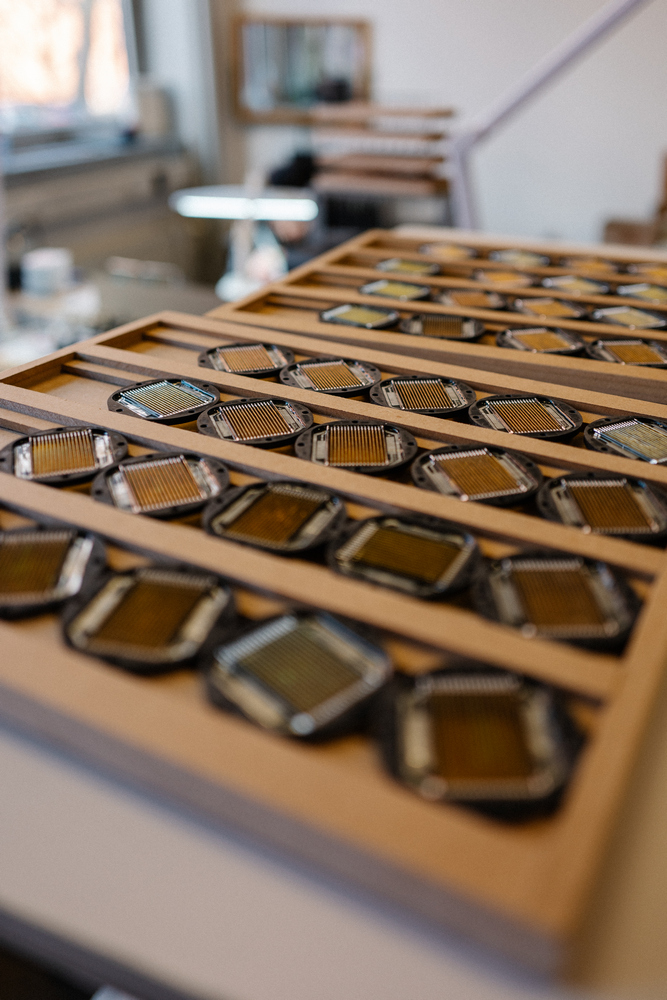
Maybe, on the other hand, studio production and listening to recorded music have increased a fair bit recently.
Yeah, I think in the first half of 2021 a lot of producers bought more stuff because they knew they would have a lot of time on their hands to actually work on music. And also because of Corona financial aid programs that we saw in Germany and elsewhere in Europe. I don't feel it's like that anymore, but there was a wave of interest in our products when the virus hit.
How do you see the future of your brand? What new goals would you like to reach? What is the perspective now?
As of today, we are a 99% pro-audio business with the occasional audiophile knocking at our door. Our goal is to expand the existing speaker range in several directions, adding models below and above the existing ones. We follow a best-in-class approach, the best possible sound at the highest possible build quality. And obviously, we want to be innovative and cutting edge with everything we do.
There is an unwritten law here that whenever we put out a new product, it has to have something special. It can be everything from a new practical feature, to a new set of materials, or in the case of the HEDDphone® a completely different motor that opens new doors for the brand. The HEDDphone® will give us a true chance to expand within Pro Audio and enter the sophisticated Consumer Audio realm. This is something that excites me very much.
You say that the development of the HEDDphone® is still in process. So what could be improved?
Well, we didn't spend an awful lot of time imagining the HEDDphone® as a potentially luxurious product. It is not so much about looks, surfaces, weight and feel, as it is about the sonic quality. The sheer quality of the audio is what makes it appealing to mastering engineers, sound designers, producers and audiophiles all over the world—but we have learned that this is not enough to be broadly successful in the high-end headphone market.
But you're on your way, because as you just said, technically the headphone is already perfect. So it's more about design.
I wouldn’t say perfect, there is always room for improvement. Weight reduction for example is very important, as is increasing the wearing comfort and so on. If we improve on these fronts I believe we have a bright future in the headphone market, where the Air Motion Transformer technology is actually still new. 99% or more of headphones in the world are dynamic headphones. And then there are a few alternative technologies that you would find in the upper price range like Planars and Electrostats. I am thrilled that by focusing on Air Motion Transformer drivers we have a one time opportunity to introduce a new motor to the world of headphones.
If you have found an error or typo in the article, please let us know by e-mail info@insounder.org.

